DS+R and Rockwell Group, WORKac, MAIO, Junya Ishigami among Beazley Designs of the Year architecture nominees
By Justine Testado|
Wednesday, Sep 11, 2019

Related
It's one step closer to finding out the 2019 Beazley Designs of the Year with the big reveal of 76 nominees. The yearly awards competition distinguishes some of the most innovative designs around the world from the past 12 months.
Projects were selected across six categories: Architecture, Digital, Fashion, Graphics, Product, and Transport. This year's nominees include Muji and Sensible 4's GACHA Self-Driving Shuttle Bus; the CATCH pocket HIV device; the world's first silent and hands-free breast pump; and Viktor & Rolf's meme-inspired couture collection, to name just a few.
In the Architecture category, nominated projects include those designed by Diller Scofidio + Renfro and the Rockwell Group, MAIO, Junya Ishigami, Ensamble Studio, WORKac, Angelo Candalepas and Associates, DnA_Design and Architecture, and more.
A winner in each category will be selected. One project will then be crowned Beazley Design of the Year, which will be announced on November 21.
Scroll down to check out the Architecture nominees!

Name: Ca’n Terra
Designer: Ensamble Studio
Paragraph description: “Ensamble Studio constructed this home in the depths of a former quarry. In keeping with the location of the building, Ca’n Terra translates as ‘the house of the earth’. The studio experimented with advanced laser scanning techniques and digital excavation, with the resulting home reaching the very interior space of the quarry. The project honors the rich history of the site, which was abandoned since its use in 1930s as a military fortification. It later went abandoned before being rediscovered by Ensamble.”

Name: Central Park, Taichung
Designers: Philippe Rahm architectes, mosbach paysagistes and Ricky Liu & Associates
Paragraph description: “A landscape and architectural design for a new 70-hectare park in Taiwan, inclusive with leisure, sport and tourist activities. As part of the park, Swiss architect Philippe Rahm worked with scientists to build a series of environmental experiences, climates and temperatures that respond to the weather and air pollution of the tropical city of Taichung in Taiwan. Located on the site of an old airport, the park has twelve sunpowered pavilions. Other spaces are constructed with specific trees and soil-surface treatments that enhance natural micro-climatic qualities to cool, dry and clean the air.”
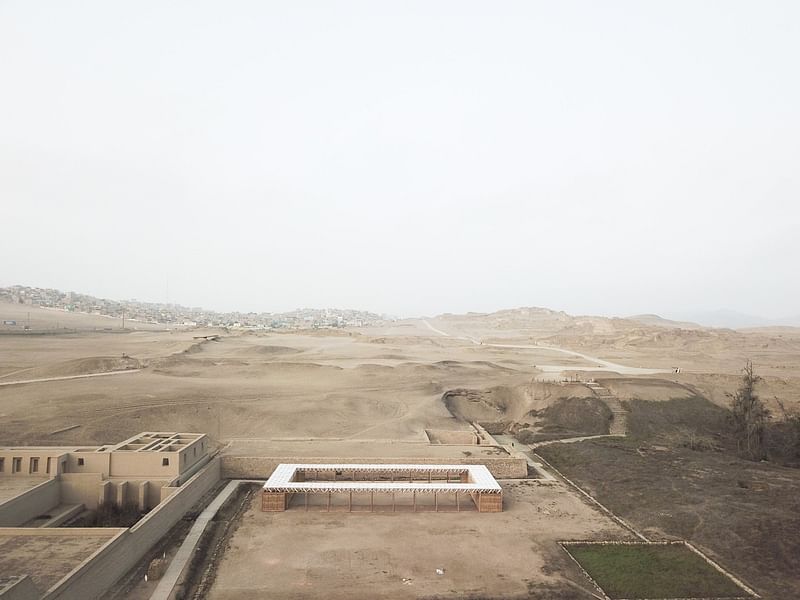
Name: A Room for Archaeologists and Kids
Designers: Studio Tom Emerson (ETH Zürich) and Taller 5 JuilleratManrique (Pontificia Universidad Católica del Perú)
Paragraph description: “A Room for Archaeologists and Kids is a timber structure which forms a covered arcade over a section of land in Pachacamac, Peru – also known as one of the most important preColumbian archaeological sites in the country. The structure was created to offer archaeologists a place to conduct their first examination of artefacts discovered in digs before the objects are transferred to a local museum. It was made using timber, cane, textiles and adobe (earth bricks) by a design team that included architecture students from Studio Tom Emerson, ETH Zürich and Taller 5, Pontificia Universidad Católica del Perú. School groups – the ‘Kids’ – are also invited to perform their own exploration in the sandpits around the courtyard.”

Name: Research into public money for public goods
Designer: Louise Carver
Paragraph description: “In 2018 geographer Dr Louise Carver began researching a farming policy proposal by the UK Government’s Department for Food and Rural Affairs. Called Public Money for Public Goods (PMPG), the document could benefit both smaller landowners and the natural environment on Britain’s departure from the European Union. Displayed in the exhibition is a poster illustrating Carver’s research into the history of agricultural policy in the UK and the potential of PMPG.”
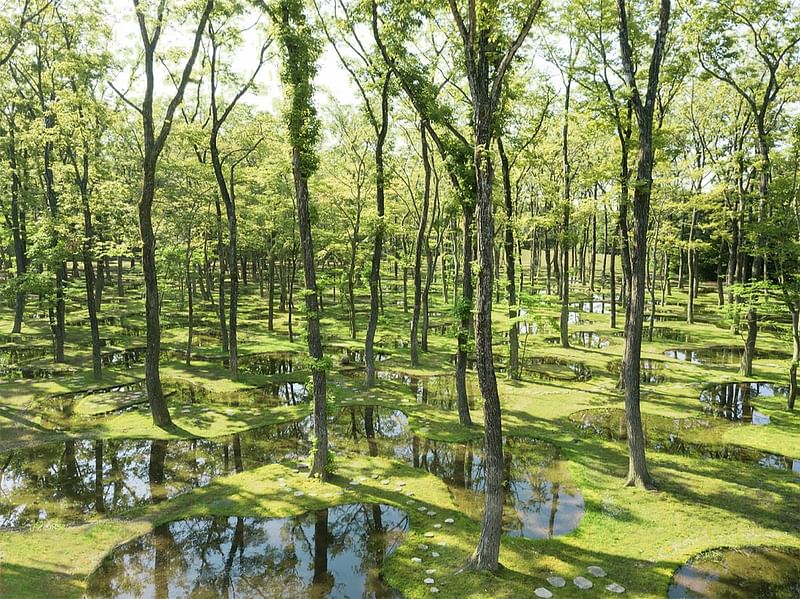
Name: Art Biotop Water Garden
Designer: Junya Ishigami
Paragraph description: “A Japanese water garden, located in Tochigi prefecture, in the town of Nasu, Japan designed by architect Junya Ishigami. The garden was built as the consequence of the uprooting of hundreds of trees for the construction of an artists’ residence and hotel. Junya proposed replanting each tree in a meadow adjacent to the site – formerly rice fields and, before that, a densely wooded forest. In doing so, he utilized the traditional tools used for leveling water, and transformed the space into a woodland landscape dotted with dozens of ponds.”
Name: Latraac Skate Cafe
Designer: Zachos Varfis
Paragraph description: “An inner-city skateboarding and design initiative
built within a derelict 19th-century courtyard in Athens, Greece, through a
framework of social entrepreneurship. The 320-square-meter property was
designed by architect Zachos Varfis from his studio on Athens’ Strefi Hill.
Zachos used remains from 19th century housing and a digitally aided
system to convert the space into a garden, cafe and a plywood bowl for
transition skateboarding. The context of the Greek financial crisis
simultaneously helped and hindered the realization of the project. On the
one hand, it limited resources, but on the other provided the conditions for
experimentation.”

Name: Maya Somaiya Library
Designer: Sameep Padora and Associates
Paragraph description: “A school library in Kopargaon, north-east of Mumbai in India, that uses an ingenious engineering system that pays homage to the Uruguayan engineer Eladio Dieste. The shape of the building is formed by a complex series of arches and double curvatures that take cues from Catalan vaulting techniques while also using some high-tech digital form-finding software. The entirely brick rooms and walls transform the roof into a usable landscape, allowing children to walk and play on top of the library.”

Name: ProxyAddress
Designer: Hildrey Studio
Paragraph description: “A system that allows those faced with homelessness to avoid being severed from support the moment they lose an address. Emerging British designer, Chris Hildrey, uses existing data to identify empty homes within a particular council and then generates a ‘proxy’ address that can be used by those facing homelessness to access services regardless of location. A trial is starting at Lewisham Council in south London along with a strategic partnership with homelessness charity Crisis.”
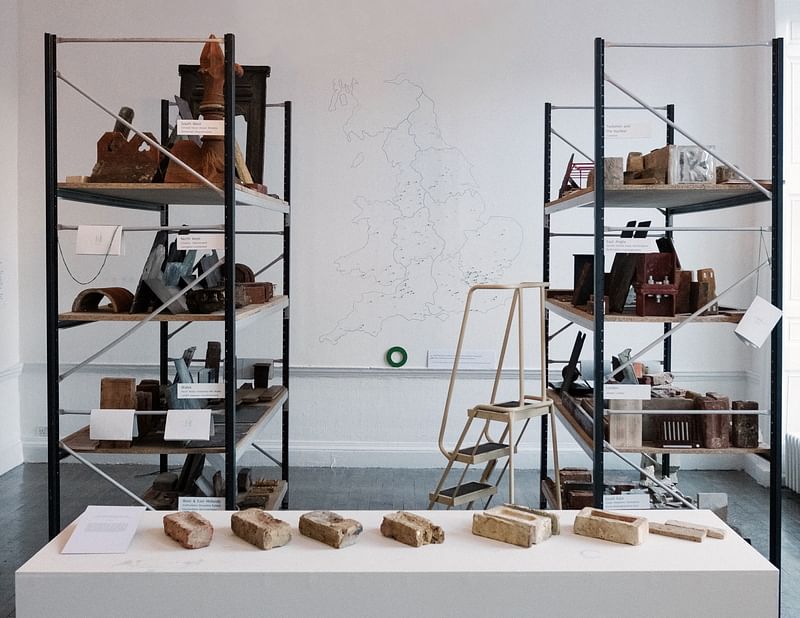
Name: Studio Opalis
Designer: Rotor and the Architectural Association
Paragraph description: “Opalis is an online directory for contactors, architects and owners who wish to source reusable materials. In the same year that RIBA declared a climate emergency, it was announced that the production of cement for use in construction and infrastructure works was responsible for up to eight per cent of global of CO2 emissions. Belgian design practice Rotor identified a gap in the market for a bridge between second-hand dealers of building materials or scrap merchants and the architects or contractors who could use those materials to reduce costs and carbon emissions in their projects.”
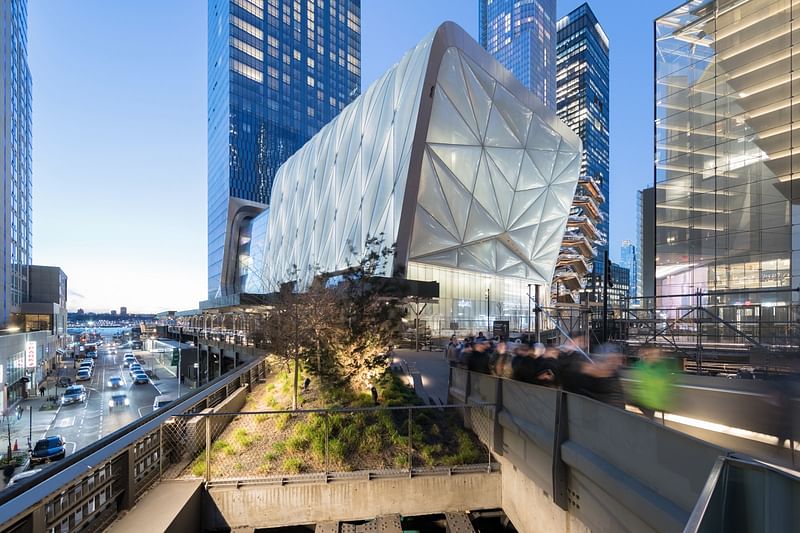
Name: The Shed
Designers: Diller Scofidio + Renfro (Lead Architect) and Rockwell Group (Collaborating Architect)
Paragraph description: “The Shed is a new arts space located in New York. The building can expand and contract (by rolling the telescoping shell on rails) allowing the venue to schedule large-scale indoor and open-air programming on demand. Inside the main building, there are two levels of gallery space, a versatile theatre, a rehearsal space, a creative lab and an event space. The Shed’s open infrastructure can be permanently flexible for an unknowable future and responsive to variability in scale, media, technology, and the evolving needs of artists.”

Name: Punchbowl Mosque
Designer: Angelo Candalepas and Associates for the Australian Islamic Mission
Paragraph description: “A complex of buildings for the Australian Islamic Mission in Sydney designed to facilitate learning and strengthen a previously disparate religious community. Australian architect Candalepas created a raw-concrete mosque, whose ceiling includes ninety-nine concrete muqarnas, a traditional ornamental vaulted ceiling dome system often used in Arab mosques. Each is inscribed in gold with the ninety-nine Arabic names for Allah and includes a three-centimeter oculus at its center, allowing the sun to stream through the building.”

RELATED NEWS Peek inside the 99-domed Punchbowl Mosque in Sydney by Candalepas Associates
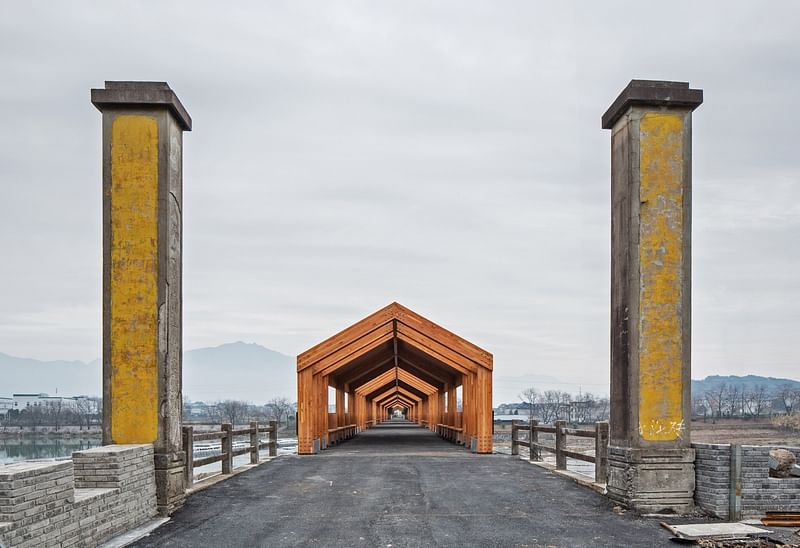
Name: The Songyang Story
Designer: DnA_Design and Architecture
Paragraph description: “A series of buildings in eastern China’s Zhejiang Province that were developed as part of a social initiative. In response to an BEAZLEY DESIGNS OF THE YEAR 2019 10 urban explosion in China which will see over 300 million Chinese villagers moving into cities in the next ten years, Beijing-based architecture firm DnA, led by Xu Tiantian, began a collaboration with Songyang County to revitalise this rural area. Her primary programme was designed to serve the villages and villagers, to restore their heritage, and to stimulate tourism and rural economic development.”
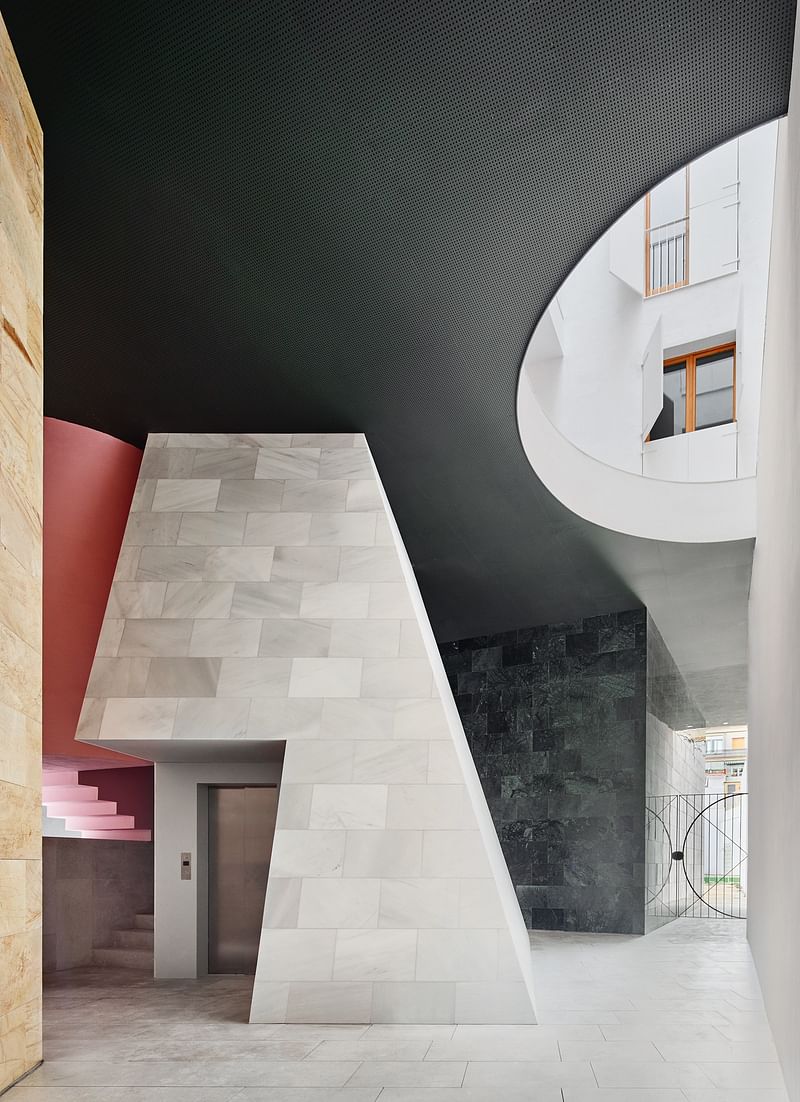
Name: 110 Rooms
Designer: MAIO
Project description: “110 Rooms is a flexible residential building that can be adapted by its inhabitants. Based on a system of 110 rooms open to diverse uses, the project considers the potential for future adaptation and the various needs of the contemporary dweller. With the ability to expand, reduce, add and subtract rooms, the considered structural layout of the building aims to eliminate any spatial hierarchy. Each floor initially contains twenty rooms, divided into four apartments of five rooms, with the strategic positioning of kitchenettes and bathrooms at points for water, airconditioning and electricity supply.”

Name: MK Gallery
Designer: 6a architects
Paragraph description: “A contemporary visual arts gallery in Milton Keynes. The new site, designed by 6a architects, is located at the edge of the city, establishing a new centre of an arts quarter. Inspiration for the build came from the origins of Milton Keynes – the development of urban areas as the government’s response to a housing crisis in the 1960s. The design of the building was intended to reflect the grid that underpins Milton Keynes, its polished façade shifts ambiguously, while a neat circular window frames views over the surrounding park.”
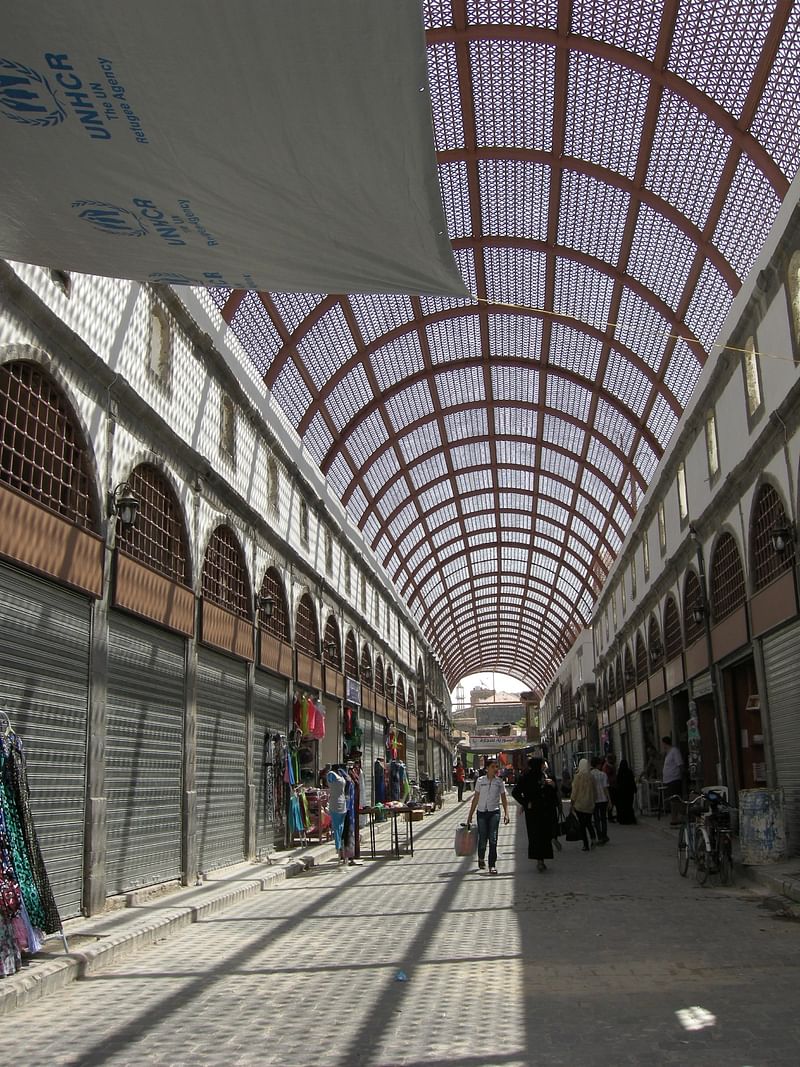
Name: A new roof for the ancient souk of Homs
Designer: Ghassan Jansiz for United Nations Development Programme
Paragraph description: “A delicately arched roof of meshed metal, designed and built under challenging conditions to provide shelter for a historic and still much-used stone marketplace in Syria, whose original roof was destroyed during conflict. Negotiating mortar shells, lack of equipment and uncertain finances, architect Ghassan Jansiz and his team of thirty young engineers worked from a single hotel bedroom, managing the design and construction of the project in shifts to create a thoughtful and powerful symbol of endurance and optimism.”
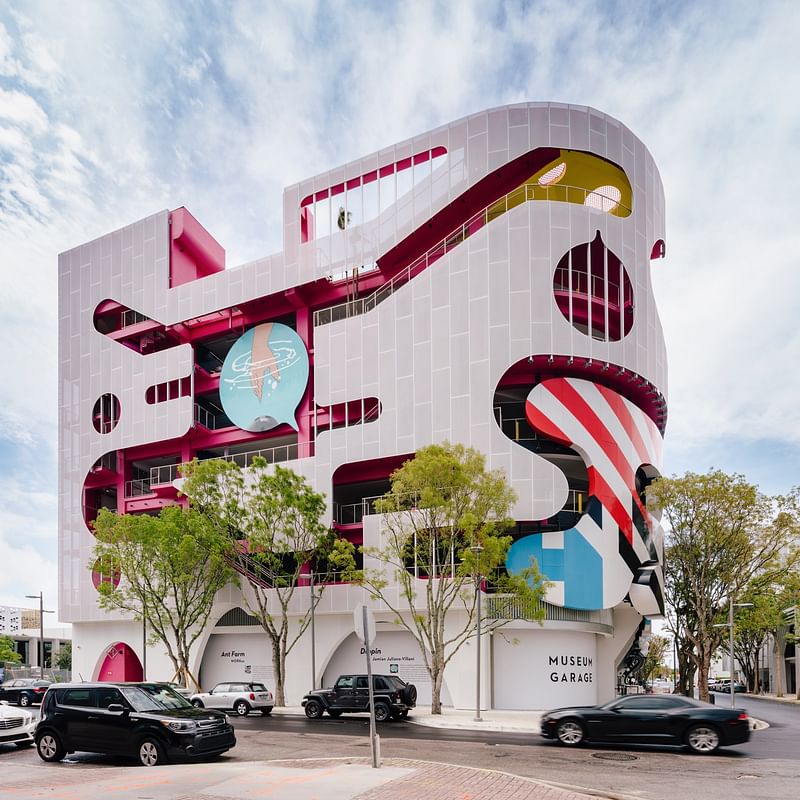
Name: Miami College Garage
Designers: WORKac, Amale Andraos and Dan Wood
Paragraph description: “A facade for a multi-story car park in Miami’s Design District. New York-based architects WORKac, produced a 122- centimeter-wide prototype for a vertical city of the future, complete with a series of public spaces stacked between the garage and a perforated metal screen. Connected by stairs, these spaces include: a gallery, children’s play area, garden, DJ platform, lending library, listening lounge, fountain, bar, and space for pets.”

RELATED NEWS Forensic Architecture's Counter Investigations is crowned Beazley Design of the Year 2018

RELATED NEWS A Danish LEGO House, a South African art museum, and a Chinese village are among the Beazley Designs of the Year nominees

RELATED NEWS David Adjaye's National Museum of African American History and Culture crowned Beazley Design of the Year


Share
0 Comments
Comment as :